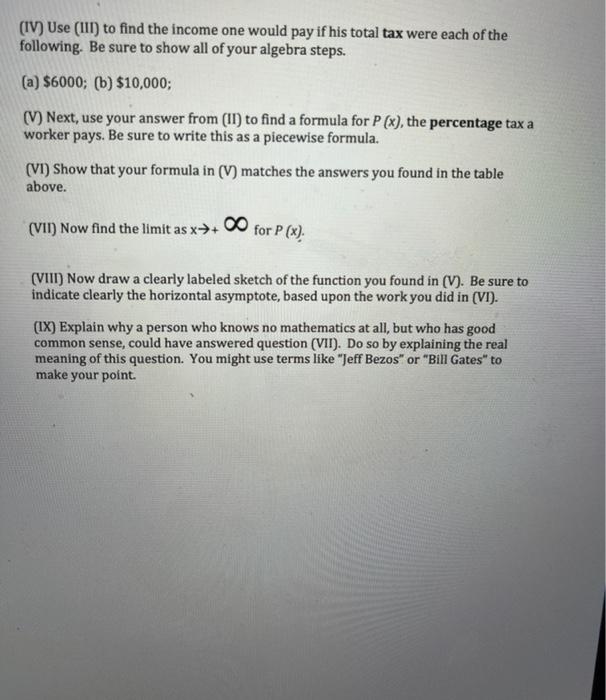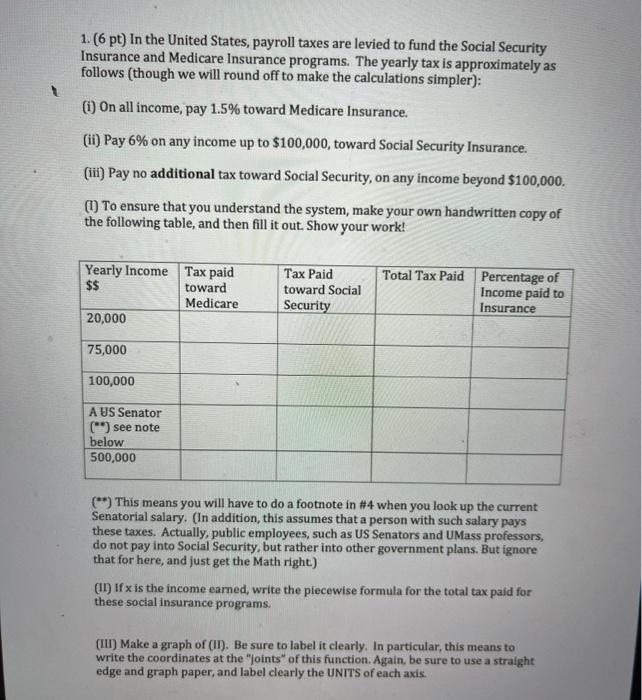
neatly and parts iv v vi vii viiii and xi PLEASE
1.(6 pt) In the United States, payroll taxes are levied to fund the Social Security Insurance and Medicare Insurance programs. The yearly tax is approximately as follows (though we will round off to make the calculations simpler): (1) On all income, pay 1.5% toward Medicare Insurance. (ii) Pay 6% on any income up to $100,000, toward Social Security Insurance. (iii) Pay no additional tax toward Social Security, on any income beyond $100,000. () To ensure that you understand the system, make your own handwritten copy of the following table, and then fill it out. Show your work! Yearly Income Tax paid $$ toward Medicare 20,000 Tax Paid toward Social Security Total Tax Paid Percentage of Income paid to Insurance 75,000 100,000 A US Senator (**) see note below 500,000 (**) This means you will have to do a footnote in #4 when you look up the current Senatorial salary. (In addition, this assumes that a person with such salary pays these taxes. Actually, public employees, such as US Senators and UMass professors, do not pay into Social Security, but rather into other government plans. But ignore that for here, and just get the Math right) (IT) If x is the income earned, write the piecewise formula for the total tax paid for these social insurance programs. (IIY Make a graph of (In). Be sure to label it clearly. In particular, this means to write the coordinates at the "joints of this function. Again, be sure to use a straight edge and graph paper, and label clearly the UNITS of each axis. (IV) Use (III) to find the income one would pay if his total tax were each of the following. Be sure to show all of your algebra steps. (a) $6000; (b) $10,000; (V) Next, use your answer from (II) to find a formula for P(x), the percentage tax a worker pays. Be sure to write this as a piecewise formula. (VI) Show that your formula in (V) matches the answers you found in the table above. (VII) Now find the limit as x++ for P(x) (VIII) Now draw a clearly labeled sketch of the function you found in (V). Be sure to indicate clearly the horizontal asymptote, based upon the work you did in (VI). (IX) Explain why a person who knows no mathematics at all, but who has good common sense, could have answered question (VII). Do so by explaining the real meaning of this question. You might use terms like "Jeff Bezos" or "Bill Gates" to make your point

 neatly and parts iv v vi vii viiii and xi PLEASE
neatly and parts iv v vi vii viiii and xi PLEASE 





